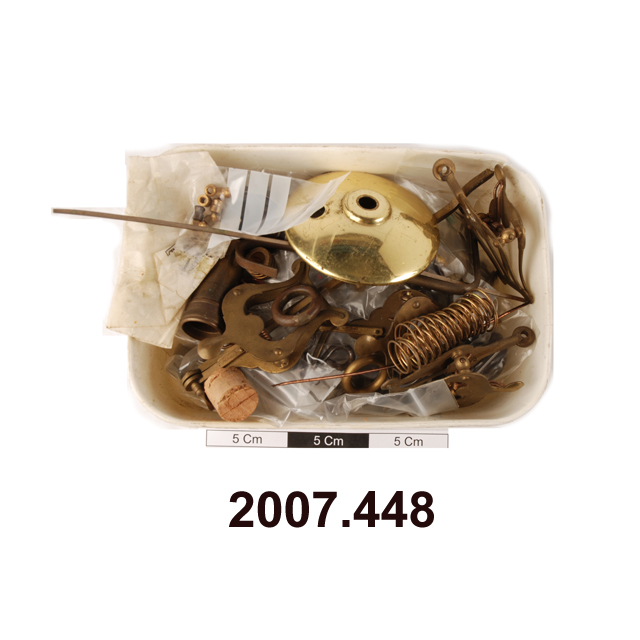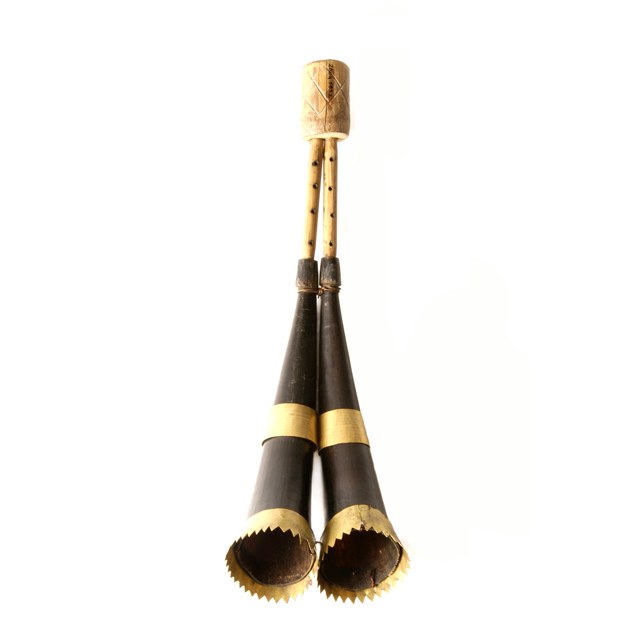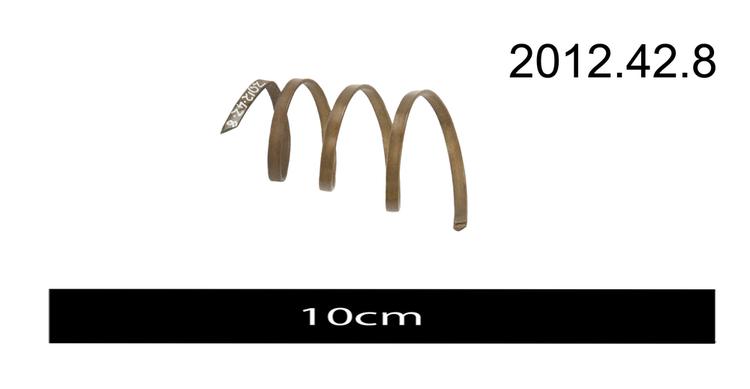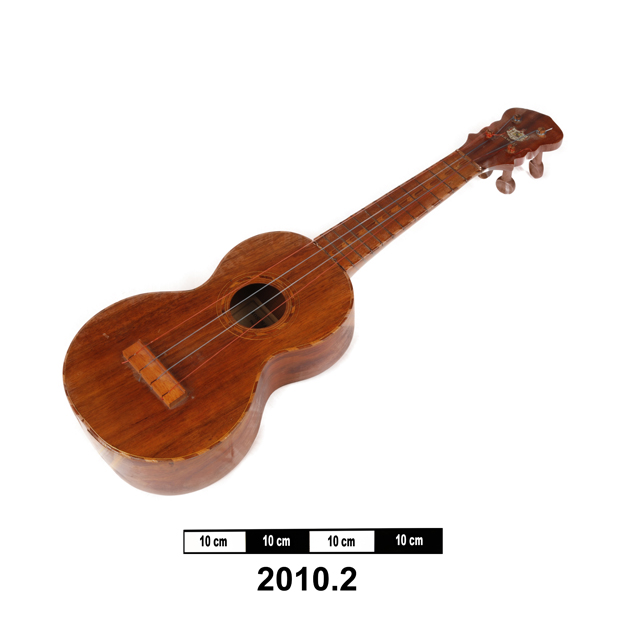
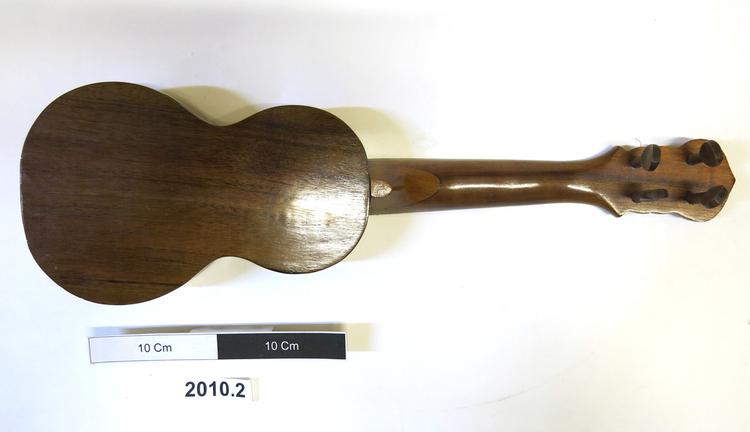
Ukulele with a waisted body in the in the style of a small Spanish guitar. The back and table are each of one piece of wood, possibly Acacia koa (for image see http://uketalk.com/ukpix/ukback800.jpg) a wood indigenous to Hawaii. The ribs are of two pieces of similar wood, joined to a bottom block of light brown wood. The headstock and neck are of one piece of wood. The heel is a separate piece of wood, glued to the back of the neck; both are screwed to the top block. Barber’s pole stringing, alternating sections of dark and light brown wood, around the edges and sound hole; with two similar lengths of stringing arranged in a herringbone pattern along the centre of fingerboard. Eleven metal frets inset into the wooden fingerboard. Four single courses of strings, the two outer of red nylon, the two inner of blue nylon. The rear entrant pegs are of wood with round heads. The strings pass over a wooden nut and are slotted into the wooden tie bridge. The headstock bears the painted coat of arms of the Hawaiian kingdom, with ‘HAWAII’ beneath. Printed rectangular label inside the back: ‘MOSSMAN UKULELE / The Instrument of Quality / Honolulu, T.H’ (i.e. Territory of Hawaii [1898-1959]). Handwritten in ink on inside of back, below label: MADE (in) HAWAII.
Ukulele, George Mossman, Hawaii The ukulele (in Hawaiian, ‘jumping flea’) is one of the best-known and most widely played musical instruments in the world, due to its small size and price tag, and its uplifting tones. Its four strings and fretted neck make fingering easy, and eliminate the guitarist’s need to master barred chords before learning to play most tunes. The instrument has a complicated history that begins with the arrival of Portuguese-speaking Madeira islanders in Hawaii during the later 19th Century. These North Atlantic islanders brought a diminutive relation of the guitar with them, called a cavaquinho. The four-stringed tenor version of this instrument became immensely popular in Hawaii with the enthusiastic support of King Kalakaua (r.1874-1891), a great patron of the arts. A major development in ukulele manufacture was the discovery of the native Hawaiian koa wood’s (Acacia koa) warm tone when used to make the instrument’s sound box, and this became the wood of choice for all of the best ukuleles thereafter. The instrument has become one of the most enduring icons of the South Pacific in the popular Western imagination, alongside the grass skirt, the flower lei, the surfboard and the hula dance. This illustrates the way that Hawaiian culture has been a gateway for Westerners to understand Polynesian culture as a whole. Elvis Presley played a central role in this regard by starring in three blockbuster musicals set in the islands. The first of these, Blue Hawaii (1961) saw Elvis bring the ukulele to the rock’n’roll generation, proving its universal and enduring appeal. Wood, brass, steel. Circa 1920.



